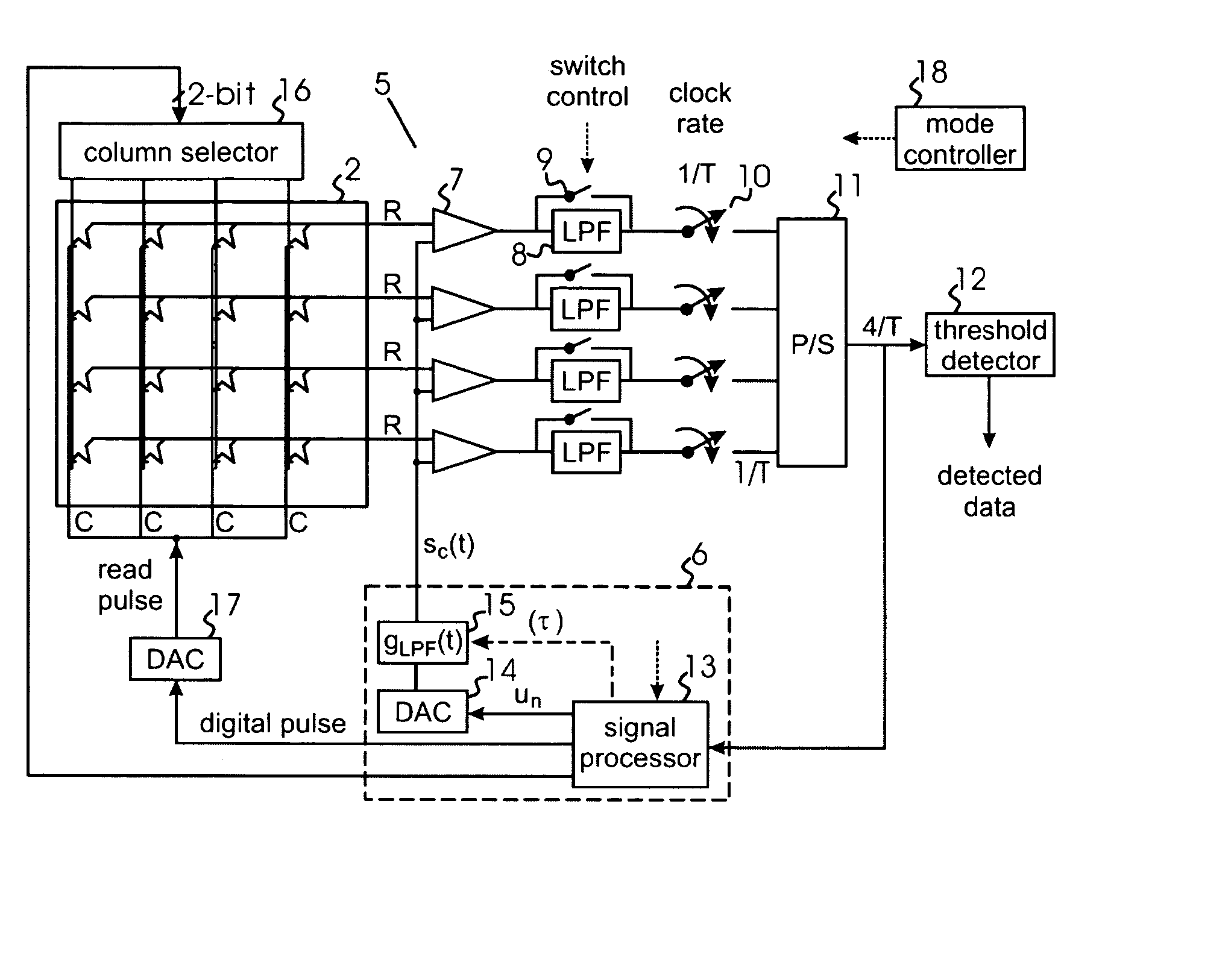Offset compensation in local-probe data storage devices
a local probe and offset compensation technology, applied in the field of offset compensation of read signals, can solve the problems of high resolution required, inability to use simple threshold detection in the presence of such offset signals, and difficult task of read detection, so as to avoid sharp changes in offset compensation signals. simple and convenient mechanism
- Summary
- Abstract
- Description
- Claims
- Application Information
AI Technical Summary
Benefits of technology
Problems solved by technology
Method used
Image
Examples
fourth embodiment
[0052] While the acquisition mode is selected at the beginning of each data line in the above example, in general this operation could be performed as frequently as desired. In practice, drifts in the electrical parameters of the system mean that relatively frequent acquisition is desirable, though too high an acquisition frequency would introduce an undesirable overhead. This issue is addressed by the invention, employing a two-stage offset compensation technique, as illustrated schematically in FIG. 10. Again, the offset compensation apparatus 35 of this embodiment is shown for a single-probe read channel, though the system can be readily extended to a probe array as before. Apparatus 35 comprises a first offset compensation stage based generally on the system of FIG. 5 above. Specifically, the first stage includes an offset signal generator 36 implemented by an analog filter which receives the same drive signal, dc or pulse, which is applied to probe sensor S for a read operation...
fifth embodiment
[0055] In offset compensation methods like that of FIG. 8 based on periodic updating of a reference parameter, there can be difficulty in following the variations of a time-varying offset. This can manifest itself as large jumps in the value of the reference parameter which also affect the read signal. This problem is solved by the invention as illustrated in FIG. 11. The offset compensation apparatus 50 of this embodiment is broadly similar to that of FIG. 8, comprising a current mirror 51, offset signal generator and subtraction circuit 52, integration stage 53 and detection stage 54 for processing the read signal from sensor S driven by signal generator 55. However, circuit 52 here comprises transistors TRef0 and TRef1, connected as shown with transistor T4 and gate capacitor C1. The effect of this difference is that, rather than setting the voltage across C1, and hence current through T4, periodically in an acquisition phase, these values are continually updated during the read ...
PUM
 Login to View More
Login to View More Abstract
Description
Claims
Application Information
 Login to View More
Login to View More - R&D
- Intellectual Property
- Life Sciences
- Materials
- Tech Scout
- Unparalleled Data Quality
- Higher Quality Content
- 60% Fewer Hallucinations
Browse by: Latest US Patents, China's latest patents, Technical Efficacy Thesaurus, Application Domain, Technology Topic, Popular Technical Reports.
© 2025 PatSnap. All rights reserved.Legal|Privacy policy|Modern Slavery Act Transparency Statement|Sitemap|About US| Contact US: help@patsnap.com



